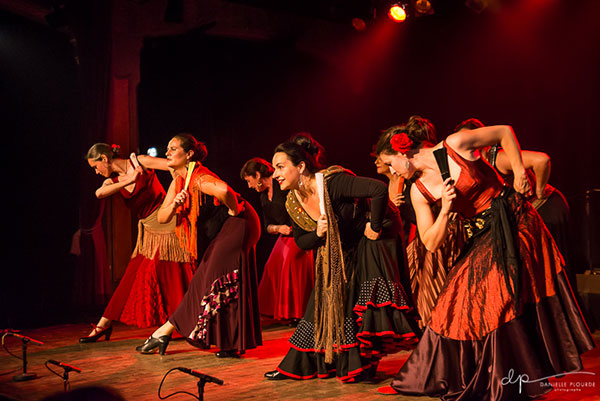LEVELS & STRUCTURE

How the Academy Works
The Session
Les cours
A good flamenco class is no different from any other well-structured dance class. At the Académie Ballet Flamenco Lina Moros all classes start with a general warm-up as preparation for the main body of the class: the study of technique (taconeo, braceo and turns) along with the learning and practice of a particular dance. A ‘cool down’ period at the end allows students time to unhurriedly integrate their new flamenco knowledge and relax muscles.
The class warm-up period is the dancer’s breakfast.
– Javier LaTorre, Spanish flamenco choreographer
Note that these are general guidelines only
Beginner Level I
Students new to flamenco with no prior experience
The first session concentrates on learning the following:
- The rudiments of flamenco footwork (including contratiempo or countertime rhythms),
- How to be ‘grounded’ and attain desired flamenco posture,
- Basic arm work and hand gestures,
- A dance or routine done to a particular rhythm
- Palmas.
These skills are acquired while learning a dance.
Beginner Levels II and III
Students who have taken Beginner I or who have some prior experience
These levels are very similar to Beginner I and their aim is to continue with the acquisition of technique and advance in the learning of a particular choreography.
Elementary Levels
Students having approximately one to two years of flamenco training
Students increase their knowledge of footwork patterns and rhythms. Those continuing into their second year usually learn a dance in a different compás and/or palo (musical form) from the previous year thereby diversifying their understanding of the art form and its styles.
Intermediate Levels
Students having approximately three to four years of study
At this level:
- Choreographies are more complex,
- Footwork patterns more intricate, longer and challenging,
- Brazco more varied,
- Students continue to work on assimilating the styles of particular palos (i.e. the feminine grace of an alegrías vs the masculine style of the farruca),
- It is often a good time for students to be introduced to dancing with an accessory.
Advanced Levels
Students having approximately five years or more of flamenco training
New developments at this level include:
- Recognizing and developing one’s own style as a dancer, more profound study of the compás,
- Learning choreographies based on cante jondo (deep and moving cante) often reserved for mature and/or experienced dancers,
- Students are occasionally invited to perform.
Along with setting choreography for her professional company Ballet Flamenco Arte de España, Lina is able to create flamenco and Spanish stylized dances with her advanced students. She works with the dancers to explore choreographic ideas and consider their input. The creative process has truly begun!
